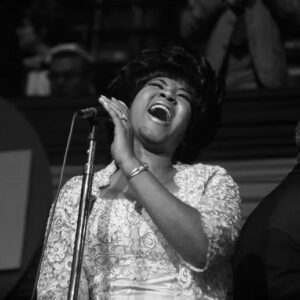Introduction
In the pantheon of rock music, few songs resonate as deeply as Jefferson Airplane’s “White Rabbit.” This iconic anthem, infused with psychedelic undertones, not only defined a generation but also remains a cultural touchstone that echoes through time. Its themes of exploration and self-discovery have inspired countless artists and listeners alike. In a recent collaboration, contemporary pop icon Pink, with her fierce vocal prowess, teamed up with the legendary Paul Shaffer, a musical director known for his extensive work with “The Late Show with David Letterman” and numerous other projects. Together, they breathed new life into “White Rabbit,” bridging the gap between the counterculture of the 1960s and today’s music landscape. This article delves into the historical context of the song, the creative contributions of Shaffer, Pink’s artistic vision, and the broader impact of their collaboration.
Historical Context of “White Rabbit”
“White Rabbit,” written by Grace Slick and performed by Jefferson Airplane, emerged during a tumultuous period in American history—the 1960s. This decade was marked by social upheaval, civil rights movements, and a burgeoning counterculture that sought liberation through various forms of expression, including music. The song, released in 1967 as part of the album Surrealistic Pillow, quickly became emblematic of the psychedelic rock genre. Its haunting melodies and vivid imagery drew parallels between Lewis Carroll’s Alice’s Adventures in Wonderland and the burgeoning consciousness-expanding experiences that many young people sought through drug use and social exploration.
The impact of “White Rabbit” during the 1960s was profound. It was more than just a song; it was an anthem for those who dared to challenge the status quo. Its inclusion in the soundtrack of the counterculture movement positioned it as a staple at protests and gatherings, resonating with themes of rebellion and enlightenment. Over the decades, the song has been reinterpreted and sampled by various artists, reinforcing its enduring relevance in contemporary music.
Paul Shaffer’s Contributions
Paul Shaffer, a stalwart figure in the music industry, has made indelible contributions to the landscape of American music. Born in 1949 in Thunder Bay, Ontario, Shaffer’s musical journey began at an early age. He honed his craft at the prestigious University of Toronto, where he was exposed to a variety of musical genres. His big break came when he joined the cast of “Saturday Night Live” in the mid-1970s, where he served as both a musical director and performer.
Shaffer’s distinctive style—an amalgamation of rock, blues, and jazz—has allowed him to collaborate with an impressive roster of artists, from David Bowie to Aretha Franklin. His work with “The Late Show with David Letterman” solidified his reputation as a maestro of musical arrangements. When it came to “White Rabbit,” Shaffer’s role was pivotal. His understanding of the song’s historical significance enabled him to respect its roots while infusing it with modern sensibilities.
In this rendition, Shaffer not only contributed his prowess as a keyboardist but also played a crucial role in reimagining the arrangement. He adeptly blended the song’s original psychedelic nuances with contemporary instrumentation, creating a soundscape that was both nostalgic and fresh. His ability to navigate the complexities of the song while ensuring it resonated with today’s audience showcases his musical acumen.
Pink’s Vision and Collaboration
Pink, an artist known for her powerful voice and unapologetic persona, approached the reinterpretation of “White Rabbit” with a unique artistic vision. Born Alecia Beth Moore, she emerged onto the music scene in the early 2000s and quickly established herself as a force to be reckoned with. Pink’s music often explores themes of empowerment, individuality, and resilience, making her a fitting choice to breathe new life into this classic.
In collaborating with Shaffer, Pink brought her signature style and emotional depth to “White Rabbit.” Her vocal delivery infused the song with a raw intensity that resonated deeply with listeners. What’s remarkable about this collaboration is the synergy between Pink and Shaffer; both artists are not only musicians but also storytellers. They recognized the importance of the song’s narrative, allowing it to evolve while remaining rooted in its original meaning.
The creative process between Pink and Shaffer was marked by mutual respect and artistic freedom. They engaged in extensive discussions about the song’s themes and their personal interpretations, leading to a fresh arrangement that highlighted Pink’s vocal strengths while paying homage to the original. Their collaboration exemplifies how two artists from different musical eras can come together to create something meaningful and relevant.
Musical Influences
To fully appreciate the new rendition of “White Rabbit,” it’s essential to consider the diverse musical influences that shaped both the original and Pink’s interpretation. The original Jefferson Airplane version was heavily influenced by the psychedelic rock movement, drawing inspiration from Eastern music, jazz, and folk traditions. The song’s ethereal qualities and complex structures reflect the band’s exploration of different sounds, creating an atmospheric experience that transports listeners to another realm.
Pink’s rendition, while retaining the song’s essence, incorporates elements from her own eclectic musical background. With roots in pop, rock, and even R&B, Pink’s influence is a testament to her versatility as an artist. Her interpretation introduces modern pop sensibilities, incorporating a stronger rhythm and more pronounced vocal dynamics. Shaffer’s arrangements further enrich the piece, blending orchestral elements with contemporary beats to create a lush soundscape that captivates the audience.
The interplay of these influences highlights the evolution of music over the decades. While “White Rabbit” remains a product of its time, Pink and Shaffer’s collaboration illustrates how music can transcend generational divides, inviting new interpretations and experiences. This blending of styles not only honors the past but also paves the way for future artists to explore and reinterpret classic works.
Audience Reception and Impact
The collaboration between Pink and Paul Shaffer did not go unnoticed by the music community. Upon its release, audiences responded with enthusiasm, praising the fresh interpretation of a classic song that had long been revered. Fans of both artists appreciated the innovative approach that retained the song’s core message while infusing it with contemporary relevance.
Listeners often remarked on how Pink’s emotional delivery resonated with them, bringing a new depth to the song. Many noted that her rendition felt like a rallying cry for today’s issues, mirroring the original’s call for liberation and self-exploration. This alignment of themes across generations speaks to the song’s timelessness and its ability to inspire.
The impact of this collaboration extends beyond just fan reception; it also signifies a significant moment in both artists’ careers. For Pink, reinterpreting “White Rabbit” not only reinforces her status as an artist willing to tackle complex themes but also showcases her ability to connect with music history. For Paul Shaffer, working alongside a modern icon reaffirms his relevance in an ever-changing industry, demonstrating that his musical expertise continues to resonate with new audiences.
Conclusion
The collaboration between Pink and Paul Shaffer on “White Rabbit” serves as a powerful reminder of the enduring nature of great music. It underscores the importance of honoring the past while simultaneously embracing the present and future. As artists like Pink continue to explore and reinterpret classic songs, they ensure that these works remain vibrant and relevant for new generations.
In a world where music often becomes a fleeting experience, the reimagining of “White Rabbit” stands out as a testament to the power of collaboration and the timelessness of artistic expression. It invites listeners to revisit the original Jefferson Airplane version and consider the cultural significance it holds, while also appreciating the fresh perspective offered by contemporary artists.
As we navigate the complexities of our own “rabbit holes”—whether they be personal struggles, societal challenges, or artistic endeavors—Pink and Shaffer’s rendition of “White Rabbit” encourages us to embrace the journey, reminding us that exploration and self-discovery are as vital today as they were in the 1960s. So, let the music play, and may the echoes of “White Rabbit” continue to inspire and resonate through the ages.





